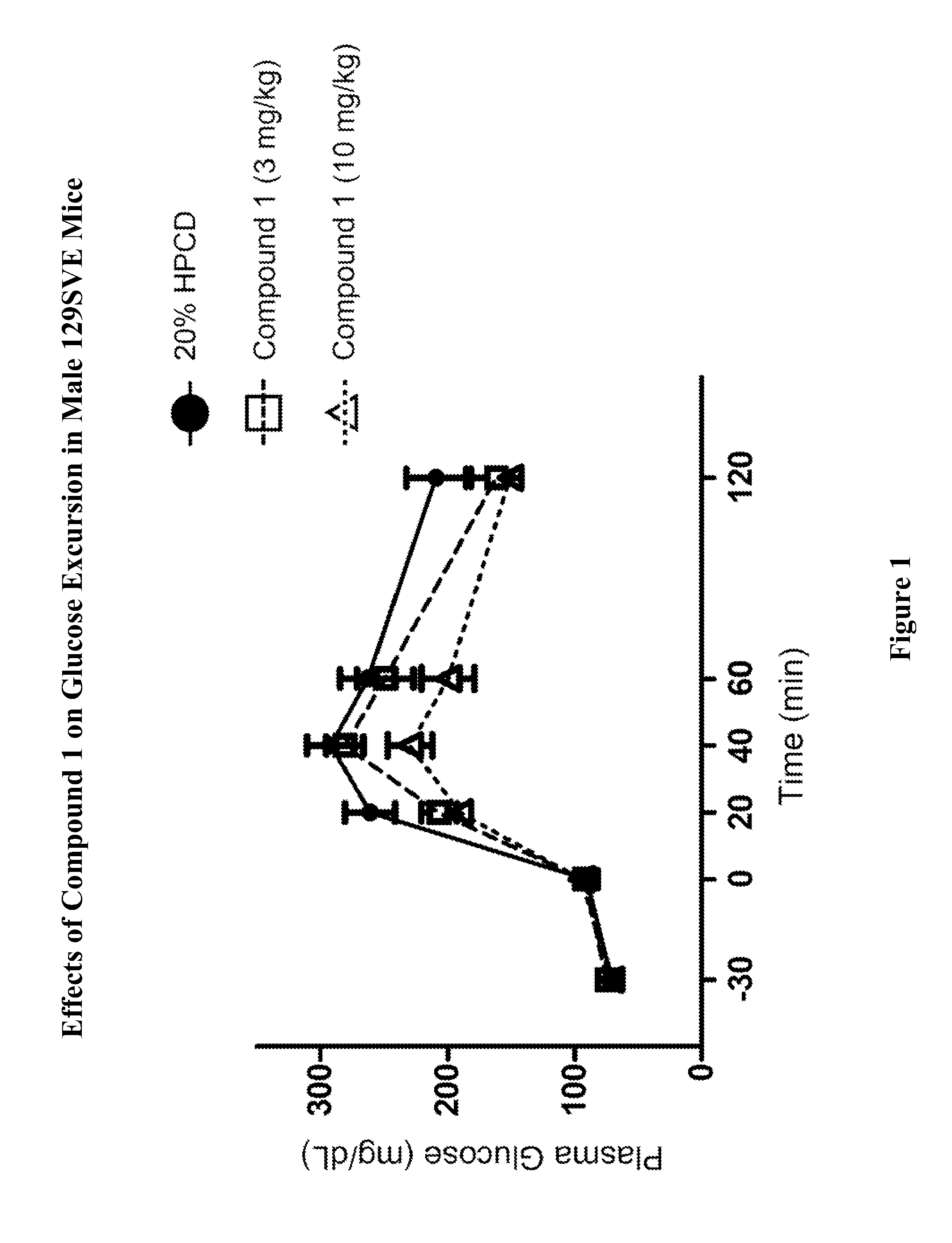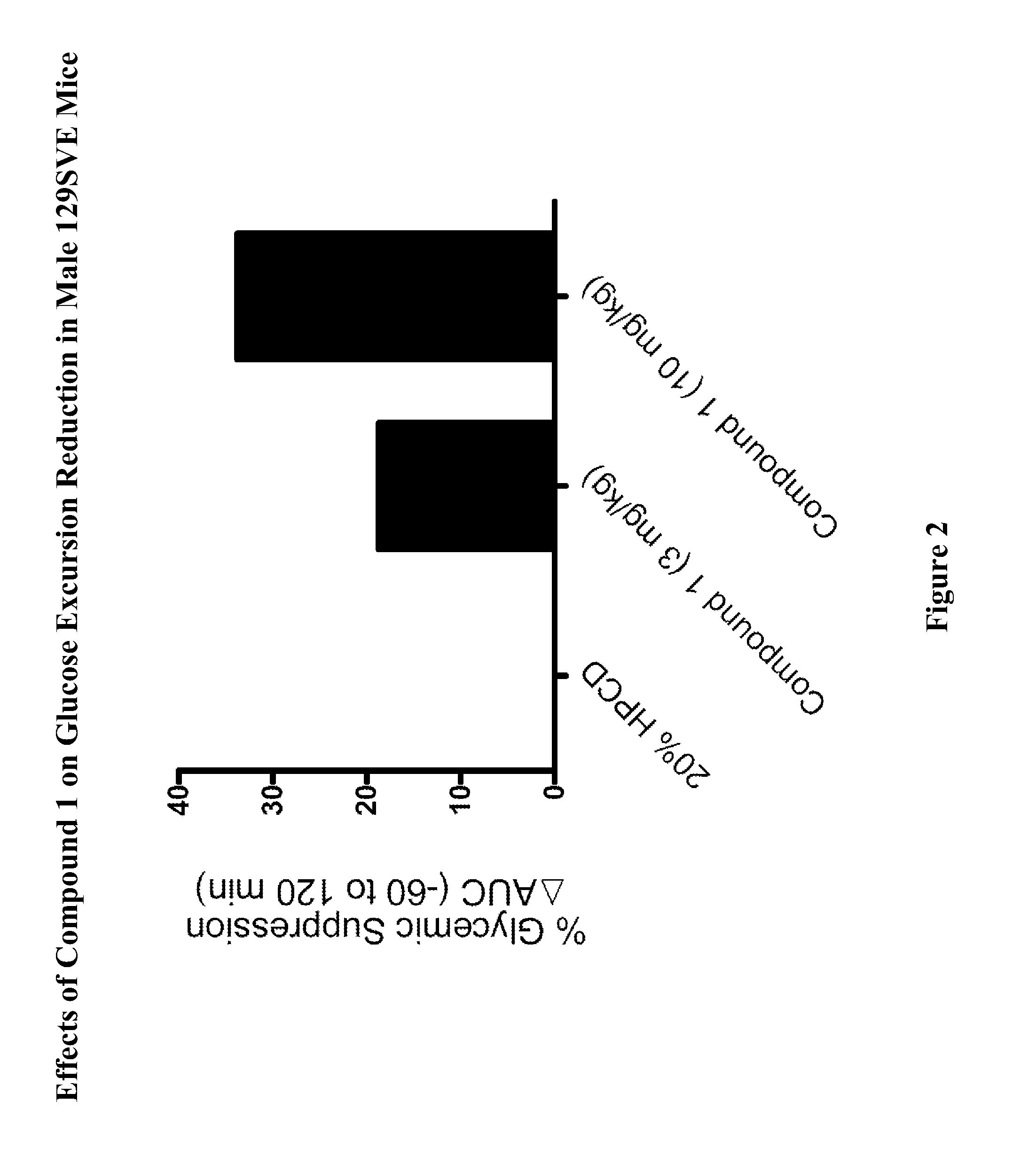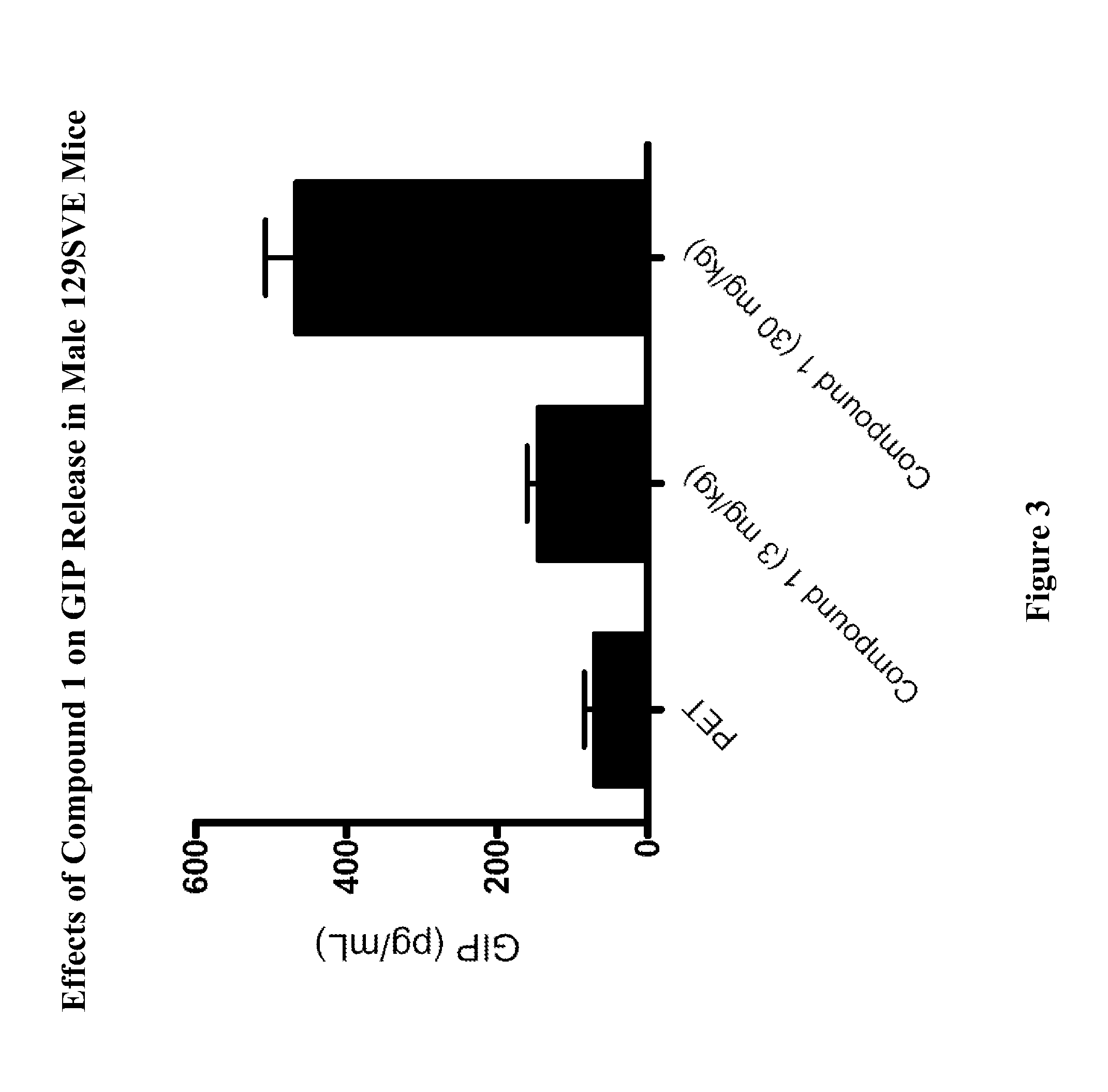Modulators Of The GPR119 Receptor And The Treatment Of Disorders Related Thereto
a gpr119 receptor and receptor technology, applied in the field of gpr119 agonists, can solve the problems of not producing insulin, not efficiently using, and not moving glucose into their cells, and achieve the effects of increasing the level of blood incretin, and increasing the secretion of incretin
- Summary
- Abstract
- Description
- Claims
- Application Information
AI Technical Summary
Benefits of technology
Problems solved by technology
Method used
Image
Examples
example 1
Syntheses of Compounds of the Present Invention
[0757]The compounds of the invention and their syntheses are further illustrated by the following examples. The following examples are provided to further define the invention without, however, limiting the invention to the particulars of these examples. The compounds described herein, supra and infra, are named according to AutoNom version 2.2, AutoNom 2000, CS ChemDraw Ultra Version 7.0.1, or CS ChemDraw Ultra Version 9.0.7. In certain instances literature names and / or common names are used and it is understood that these names would be recognized by those skilled in the art.
[0758]Proton nuclear magnetic resonance (1H NMR) spectra were recorded on a Bruker Avance-400 equipped with a QNP (Quad Nucleus Probe) or a BBI (Broad Band Inverse) and z-gradient. Chemical shifts are given in parts per million (ppm) with the residual solvent signal used as reference. NMR abbreviations are used as follows: s=singlet, d=doublet, dd=doublet of doubl...
example 1.1
Preparation of 1-Methylcyclopropyl 4-(5-Fluoro-6-(2-methyl-6-(methylsulfonyl)pyridin-3-yloxy)pyrimidin-4-yloxy)piperidine-1-carboxylate (Compound 1)
Step A: Preparation of tert-Butyl 4-(6-Chloro-5-fluoropyrimidin-4-yloxy)piperidine-1-carboxylate
[0760]To a solution of 4,6-dichloro-5-fluoropyrimidine (1.00 g, 5.99 mmol) and tert-butyl 4-hydroxypiperidine-1-carboxylate (1.205 g, 5.99 mmol) in THF (10 mL) at −78° C. was added 1 M potassium tert-butoxide solution in THF (5.99 mL, 5.99 mmol) dropwise. The mixture became thick and additional THF (10 mL) was slowly added. After stiffing for 15 min, the mixture was diluted with water and extracted with EtOAc. The organic layer was concentrated under reduced pressure and purified by silica gel flash column chromatography to give the title compound as a colorless oil, which solidified slowly (1.9561 g, 98%). Exact mass calculated for C14H19ClFN3O3: 331.1. found: LCMS m / z=332.4 [M+H]+; 1H NMR (400 MHz, CDCl3) δ ppm 1.45 (s, 9H), 1.75-1.85 (m, 2H...
example 2
Effects of Compound 1 on Glucose Homeostasis in Male 129SVE Mice (oGTT)
[0765]Male 129SVE mice (approximately 8 weeks old) were fasted for 18 h and randomly grouped (n=6) to receive a GPR119 agonist (Compound 1) at 3, or 10 mg / kg body weight. Compound 1 was delivered orally via a gavage needle (p.o., volume at 4 mL / kg) 30 minutes prior to glucose bolus (3 g / kg) (time=−30 min in FIG. 1), with a separate group receiving vehicle (20% hydroxypropyl-beta-cyclodextrin (HPCD) as a control. At time 0 min the glucose bolus was administered. Levels of blood glucose were assessed using a glucometer (One-Touch Ultra™, LifeScan) at time −30 min (prior to compound administration), at 0 min (when the glucose bolus was given), and at 20, 40, 60, 120 min post glucose bolus. The plasma glucose level (Table A) and glucose excursion curve (FIG. 1) are shown. Glucose excursion reduction (area under the curve (AUC)) in compound-treated animals relative to vehicle control is shown in FIG. 2. These results ...
PUM
| Property | Measurement | Unit |
|---|---|---|
| Composition | aaaaa | aaaaa |
| Pharmaceutically acceptable | aaaaa | aaaaa |
Abstract
Description
Claims
Application Information
 Login to View More
Login to View More - R&D
- Intellectual Property
- Life Sciences
- Materials
- Tech Scout
- Unparalleled Data Quality
- Higher Quality Content
- 60% Fewer Hallucinations
Browse by: Latest US Patents, China's latest patents, Technical Efficacy Thesaurus, Application Domain, Technology Topic, Popular Technical Reports.
© 2025 PatSnap. All rights reserved.Legal|Privacy policy|Modern Slavery Act Transparency Statement|Sitemap|About US| Contact US: help@patsnap.com



